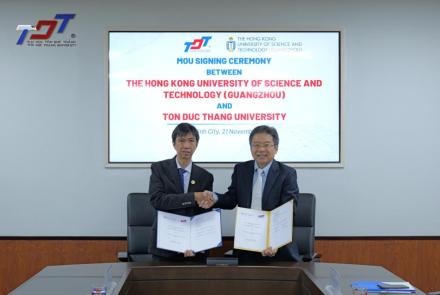The new scientific research result of Ton Duc Thang University on the International Journal of Heat and Mass Transfer
Ton Duc Thang University (TDTU) is proud to introduce a new research result entitled “Deformation and breakup of a double-core compound droplet in an axisymmetric channel” to all lecturers and students interested. This study was published in the well-known International Journal of Heat and Mass Transfer, Volume 135, June 2019, Pages 796-810 (ISSN: 0017-9310), belonging to the Elsevier Publisher. The International Journal of Heat and Mass Transfer is an ISI journal, with an Impact Factor (IF) of 3.891 according to Journal Citation Reports (Clarivate, USA) and an H-index of 163 according to SJR (Spain). According to TDTU’s ranking system for international publications, the International Journal of Heat and Mass Transfer is ranked as “exceptional journal” in the subject areas and categories of “Fluid flow and transfer processes”.
Compound droplets have recently drawn much attention because of their wide range of applications including cosmetics, drug delivery, biotechnology, food processing, microfluidic and the like systems, porous structures and so on. They can be produced via single or multi-step fabrication methods using T-junction or two flow-focusing devices or homogenizers. Depending on a particular application, compound droplets can consist of one single inner droplet (i.e. single-core compound droplets) or many inner droplets (i.e. multi-core compound droplets). Unlike single-core compound droplets, multi-core compound droplets can exist in various configurations such as concentric multiple compound droplets, compound droplets containing of various numbers of individual (single) inner droplets or compound droplets with complex internal structure. When being carried by a continuous external flow, they can exhibit various and complex behaviors including deformation and/or breakup into smaller droplets. Accordingly, it is no doubt that understanding the rheology behavior of compound droplets plays a crucial role in controlling, advancing and widening their applications.
There are many published works study on the deformation, breakup, and dynamic behavior of compound droplets. However, in these above-mentioned works, the authors focused only on compound droplets with one single inner droplet or in the non-breakup region. Recently, in previous work, the authors numerically investigated both deformation and breakup of multi-core compound droplets in simple shear flow. However, this work only considered the cases in which the flow was created by moving the top and bottom boundaries in the opposite directions (i.e. simple shear cases) and thus resulted in a decrease in shear rate from the boundary to the center. In the new paper, the authors numerically investigated the finite deformation (i.e. non-breakup) and breakup of a double-core compound droplet in an external flow confined in an axisymmetric channel, in which the shear rate increases from the boundary to the center.
The main contribution of this paper are detailed numerical simulations of deformation and breakup of a multi-core compound droplet in a modest external flow and the effects of various parameters on the rheology behavior of the compound droplet are investigated. Numerical results show that the compound droplet exhibits two distinct modes – finite deformation or breakup – depending on the flow condition. In the finite deformation mode, the inner droplet first moves away from and then moves back to the center. It stays there for the rest of time, resulting in the non-breakup of the outer droplet. However, in the breakup mode, after moving back to the center, the inner droplet again moves away while the outer droplet is continuously stretched and eventually performs necking and breakup at its ends. The transition between these two modes occurs when the Capillary number varies in the range of 0.004–0.1, the channel size ratio varies in the range of 0.5–1.4 or the ratio of the outer droplet radius to the channel size varies in the range of 0.3–0.9. Changing the Reynolds number (from 0.01 to 1.0), the interfacial tension ratio (from 0.25 to 4.0), the ratio of the inner to outer droplet radii (from 0.3 to 0.45) or the inner droplet location does not make any transition. In addition, the effect of the kinematic viscosity ratios on the transition is also studied. Also, a phase diagram in terms of the capillary number and the droplet size, on which the breakup and non-breakup modes are recognized, is proposed.

The main author of this study is Dr. Vu Tri Vien, Lecturer of Faculty of Electrical and Electronics Engineering at TDTU. This publication is the result of a long-term and very elaborate research cooperation of the authors, due to high requirements of the International Journal of Heat and Mass Transfer which accepts only pioneering research papers.







